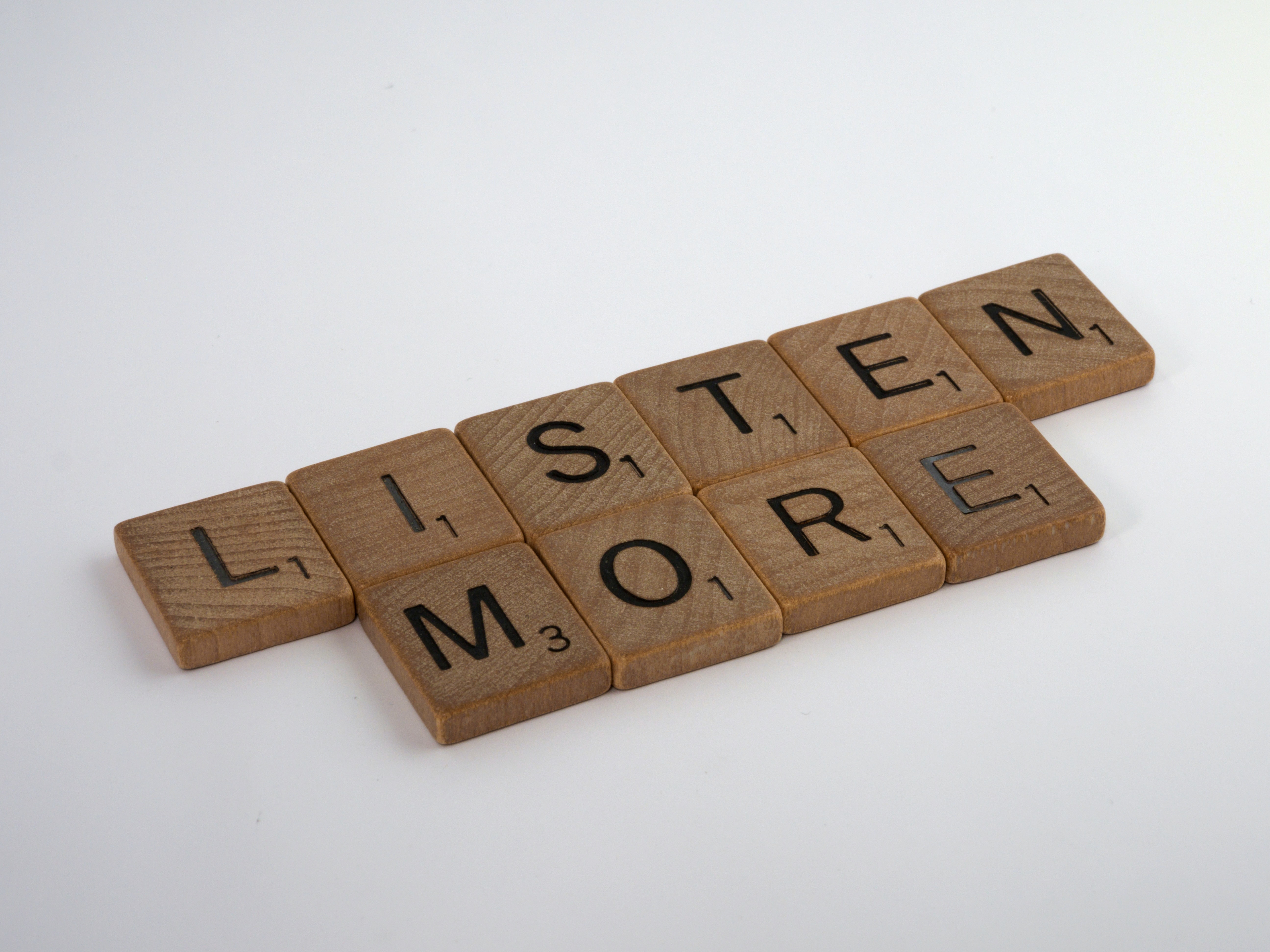When it comes to developing your communication skills, listening – and specifically active listening – is an often overlooked but incredibly important skill. The art of active listening improves both the outcome of the work and how you work with others. Being a good listener can help build relationships, solve problems, improve collaboration, resolve conflict and improve accuracy.
What is Active listening?
Active listening is when the listener is engaged with their conversation partner and listens attentively while someone speaks, paraphrasing and reflecting back on what is said and withholding judgment and advice.
When you have all the correct information, you are more likely to be a concise, clear and much more confident communicator.
Here’s where the difference between ‘hearing’ and ‘listening’ comes in. Most of the time we appear to be listening but in fact, we only hear what’s happening around us and do not really absorb anything. Remember when your colleague brought you up to speed on the latest update on your project and you found them to be annoyed that they had to repeat what they were saying? It happens to all of us. This is because our brains are incredibly busy and we often get caught up in our own thoughts, which leads our listening to switch off.
Having effective listening skills will help you tremendously in your personal and professional life, especially when you are in a leadership position.
Luckily, anyone can become a more active listener with these seven tips:
Too often we try to multitask, whether it’s watching TV while browsing through social media or talking to a colleague while thinking about our to-do list. We live in a fast-paced world and often forget to slow down, switch off surrounding interferences, become present and only focus on the primary object. When you give somebody your undivided attention, you’re more able to listen, properly consume their information and respond.
From a young age, we learn that making and maintaining eye contact is a sign of respect. By doing so, you are not only giving a person your undivided attention and focus, but you are also engaging in a form of body language which is important during communication. When you maintain eye contact with the person you are talking to, it indicates that you are focused and paying attention. It means you are truly listening to what the person has to say. Similar to hearing and listening, ensure that you are ‘seeing’ and not just ‘looking.’ This is equally true for virtual conference calls. Someone can easily know if an attendee is distracted and if they are opening other tabs or doing other work. Show you are paying attention and really listening by keeping the call window open.
Please remember not everyone you encounter in life will come from the same Saudi background, culture, and mindset that you’re accustomed to. That’s why it is so important to listen with an open mind and stay as far away from biases, preconceptions and assumption-making as possible. We know it can be a challenging task to listen to something you do not agree with, but having a willingness to consider the merit in what other people say shows leadership and enables you to consider all the facts before drawing conclusions on a topic.
Allow the person that is speaking enough time to express themselves and get all their points across. Interrupting them might disrupt their stream of thought and can appear disrespectful. Listen to the full story, avoid creating your own conclusions, note down any questions you may have and allow them to finish their part. If you have any comments, wait until they finish or find a suitable time to speak – when they pause for a moment or if they ask if there are any questions, for example. Our brains often try to jump to conclusions and want to be the smartest person in any discussion, but try to dial down the eagerness and listen first to all the facts before you ask questions. Being the loudest person in the room does not make you the leader, as they say.

To master active listening, you need to shift from just hearing to listening and consuming all the information that’s being conveyed to you.
What you see can also make you a better listener. Try and note other nonverbal cues, such as facial expressions and body language. These cues can determine when a piece of information is important, what to focus on more and the sensitivity of a topic. Sometimes the verbal message and the non-verbal message communicated through a person’s body language can be two totally different things. If a person says one thing, but their body language says something else, you will likely feel they are not conveying the truth.
As the listener, you can demonstrate that you have been paying attention by asking the other person relevant questions during the conversation and making statements that help clarify certain points. By doing so, you show that you are interested in what the other speaker has been saying.
We encourage you to conclude your conversations with a summary of the main points in order to show you were engaged and listening. This also ensures that you have understood and consumed all the information, and it is a great opportunity for the other person to fill in the blanks and add to your understanding.
The art of listening can be a complex skill to master, but it’s never too late to put our seven tips to use and see how your communication skills improve. If you wish to advance to professional levels in the art of listening, we recommend and invite you to attend the Emerging Sector Skills courses organized by Misk.
Did you enjoy reading this article?
Share your thoughts or questions with us at
[email protected]